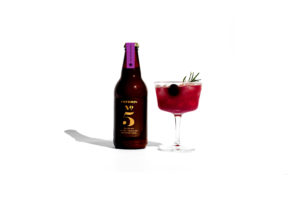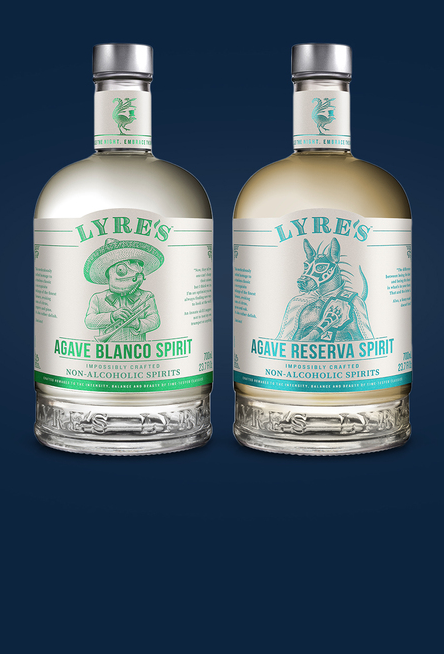
The Volstead Act of 1919—a.k.a. Prohibition—effectively banned the manufacture, sale, or possession of “any intoxicating liquor” in the United States, excepting those used for religious purposes. Backed by religious groups, the legislation was intended to curb alcoholism, domestic violence, and booze-fueled corruption. Instead, the mass bootlegging operations that ensued gave us illicit speakeasies, toxic bathtub concoctions, and an outrageously violent criminal culture.
During this time, many bootleggers were caught and slapped with economic ruin or a stint behind bars. It was a far cry from the consequences of today’s illegal cheese importation, but the way the U.S. Food and Drug Administration treats some European cheeses makes those who love them feel similarly frowned upon.
Many, many cheeses made elsewhere are not allowed over the U.S. border, primarily because they are made with raw (unpasteurized) milk. The FDA deems raw milk a health risk and under a regulation dating back to at least 1949, requires that most cheeses made in America be pasteurized or aged 60 days. (The production and sale of domestic raw milk cheeses is sometimes allowed, but is subject to so many regulations that maps displaying the state-by-state rules are a patchwork of colors and caveats.) However, while raw cheese is sometimes tied to outbreaks of listeriosis, salmonella, and E. coli, responsible makers rigorously test their products to ensure they are safe for consumption.* Only 22 cases of hospitalization a year are attributed to unpasteurized cheese; for comparison, dogs send up to 13,000 per year to the hospital. Considering our current strident regulations around food production, storage, and testing, America’s 80-year-old pasteurization mandate feels archaic today.
Microbes in raw cheese give it an extra oomph, a depth of flavor and aroma that’s hard to replicate in pasteurized cheese. Pasteurization kills these microbes, so many FDA critics say that Americans are being deprived of certain legacy European cheeses as they were meant to be enjoyed, like Brie de Meaux and Roquefort. But rules are rules, and retailers who manage to sneak raw cheeses past customs can be hit with steep fines, if caught. So, we have to make do without—and thankfully, plenty of alternatives pass muster.
Until recently, sober-curious drinkers couldn’t say the same thing about alcohol-free options. Those who prefer not to drink have long been limited to seltzer, soda, or juice, all of which are either too much or leave something to be desired. But no more.
We are now firmly entrenched in the New Temperance movement, in which grown-ups who enjoy a stiff drink can do so but can opt out of the impairment (and the party pooping). Unlike teetotalers of the Prohibition-era—during which the renunciation of alcohol was much more political than personal—today’s “dry” campaigners do not demand that the party stop. Alcohol-free libations are meant to be sipped leisurely, before or after dinner, and give the drinker something more to contemplate besides bubbles. They are nuanced and refined, often bearing names reminiscent of a Victorian-era pharmacy.
What about the price tags?
Non-alcoholic craft “spirits” can be just as pricey as their alcoholic counterparts, but the price reflects their careful conceptualization and execution. As such, they are not meant for chugging, but rather should be measured out as you would a premium spirit: one or two ounces at a time, finished with a mixer or a large cube of ice.
And now, as I sip on a glass of dealcoholized wine (notably absent from this list), I give you my top picks for sober spirits and the (legal) cheeses that complete them.
* Note: If you are pregnant, treat raw cheese as you would alcohol; do not consume.
GHIA APÉRITIF + MAHON
Milk: Pasteurized Cow
Ghia got me through Instagram—photos of deep red bottles posed in tableaus softly lit like a seventies pin up shoot. I ordered a bottle for research purposes, and on the first sip, I thought, “It’s a cloudy Campari!” Ghia is citrusy, softly bitter, and hard to mistake for juice—it’s definitely a grown-up’s drink. Pair it with a sharp, salty cheese to cut through its depths of flavor.
CURIOUS ELIXIRS NO. 5** + CAPRIOLE DAIRY O’BANON
Milk: Pasteurized Goat
Curious Elixirs are part of the wave of adaptogenic drinks making the rounds, complex potions infused with herbs that promote relaxation and mental tranquility. Billed as an alcohol-free social lubricant of sorts, these libations can be just as nuanced as a craft cocktail that’s been clarified, fat-washed, or aromatized. With notes of chocolate, cherry, ginger, and smoke, Curious No. 5 serves all the gravitas of an Old Fashioned alongside a boozy goat cheese.
** Use code CULTURE22 for $10 off your order of $50 or more!
LYRE’S AGAVE RESERVA + QUESO OAXACA
Milk: Pasteurized Cow
Maybe it’s me (or my budget), but sometimes I feel like clear spirits lack actual flavor. I honestly couldn’t tell you the difference between various brands of gin, vodka, or tequila unless they expressly state on the label that “this one has jalapeños in it,” or whatever. Without the alcohol, Lyre’s take on tequila allows flavors of pine, peppercorn, and chamomile to rise to the surface, borne up by the sweet softness of agave nectar. I’d recommend it with a mild Mexican cheese like stringy Oaxaca, so as not to compete with the subtle flavors. Lyre’s also makes an Orange Sec, so you can give it the full margarita treatment, salted rim and all.
N/A AMARO #1 + MEREDITH DAIRY MARINATED FETA
Milk: Pasteurized Sheep & Goat
This idea came to me while I was deep in my amaro obsession. Inspired by a bastardization of the recipes in Brad Thomas Parsons’ book Amaro, I wanted to see if a sippable, delicious apéritif was possible without high-proof alcohol. Turns out, it is! I enjoyed mine with a salty smear of aromatic feta.
N/A Amaro #1
Ingredients
- 1 tablespoon dried orange peel
- 1 tablespoon dried lemon peel
- 1 tablespoon gentian root
- 1 tablespoon dried rosebuds
- 1 tablespoon juniper berries
- 1 teaspoon cloves
- 1 teaspoon pink peppercorns
- 1 cinnamon stick snapped in half
- handful crystallized ginger torn
- Peel of ½ orange sliced into strips (save the orange)
- 3 cups water
- 2 oranges juiced
Instructions
- Combine all ingredients except the orange juice and seal in a glass Mason jar. Place in the refrigerator and let steep for 1 week, shaking occasionally.
- Strain out the solids and add the orange juice.
- Enjoy chilled over a large ice cube or mixed with seltzer, preferably citrus-flavored







